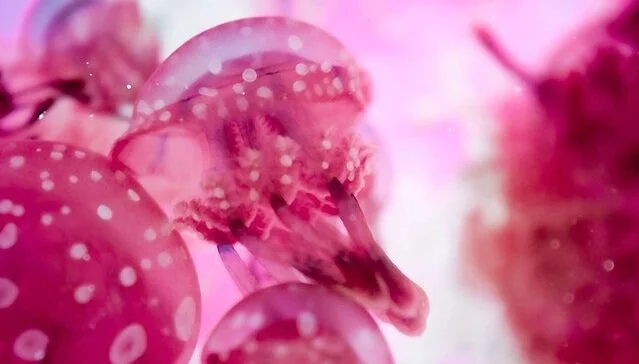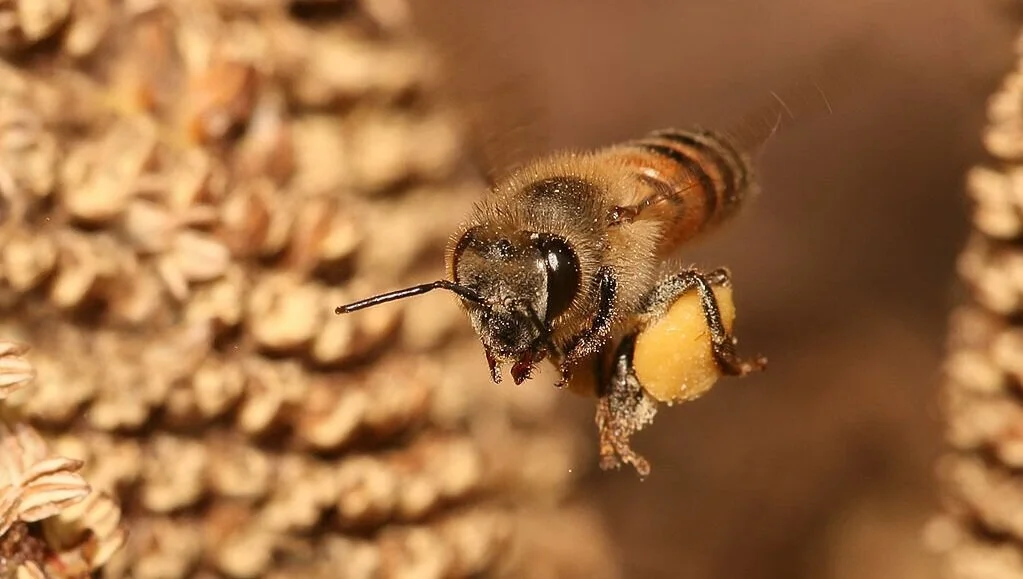Tackling the Climate Crisis with Feminist Geography
Growing up in a rural area of northeastern Italy, Martina Angela Caretta witnessed increased mechanization in her home region in the 1980s and 90s. The area metamorphosed from historically poor and reliant on agriculture into Italy’s second largest industrial center. She watched as companies of all sizes popped up around her grandparents’ sorghum farm, drastically changing the economic and geographic landscape of the region.
Now 35 years-old, with a PhD in Human Geography from Stockholm University, Caretta reflects on her childhood on that farm, where her passion for water management began. “I remember being in the field and helping out with the irrigation,” she says over Zoom from her home office in Lund, Sweden. “They would irrigate day and night, especially during the summer. You do it in shifts basically, like 'when the water comes' or when the neighbor passes on the water to you. Irrigation has always been interesting to me.”
“I've always been what you would call a ‘participant observer,’” she adds.
Caretta is a feminist geographer whose work has taken her to West Virginia, East Africa, Central America, and northern Europe, where she’s recently relocated, having been tenured in January of this year at Lund University. Of the many elements that designate her work as “feminist,” Caretta examines not only the physical but the social and emotional costs of climate change and water insecurity in highly arid or polluted regions, paying close attention to the impacts of environmental degradation along gendered lines.
Water insecurity and climate change are universal crises that affect all human life. But Caretta’s research indicates that these crises pose specific challenges for women. In her 2017 report for the UNESCO World Water Assessment Program on migration and its connection to water scarcity, gender, and youth employment, Caretta details how migration patterns are forged in disaster. According to the report, four billion people live under conditions of severe water scarcity at least one month per year, and an additional half a billion face these conditions year-round. Increased desertification and polluted water sources will often drive the man of a household to venture to a country’s urban centers in search of work, leaving women and children vulnerable in an increasingly uninhabitable environment.
In the case of the industrialized Appalachian region of the U.S., where Caretta has run the Hydrofeminist Lab at West Virginia University (WVU) for the last four years, much of the water people rely on to survive has been rendered toxic by extraction methods such as hydraulic fracking and pipeline construction. While corporations like Chevron and Antero Resources frack and mine, women volunteers in the region have built the Watershed Movement to clean up rivers and creeks with very little government support or funding.
“A lot of the work of feminist geography is the work of embodiment, and bodily feelings and emotions, and it is an important component of the research.”
Traditionally, women bear the labor of what’s known as “watering the home,” or managing the water used for drinking, bathing, and washing clothes and dishes. Therefore, Caretta says, women are usually the first to notice the degradation of their environments and consequently take on the majority of the volunteer and service work needed to address it.
In Appalachia, this is a familiar dynamic. “Appalachian women were the first to react and start going to EPA meetings, saying ‘what's happening to our water?’” Caretta explains. “Women are the first ones realizing that the quality's worsening, the pressure is not the same, the taste is changing, the smell is changing, because we are the ones that clean, you know? And so that's what triggered a movement of organizing and activism [in Appalachia].”
As for her own work, it’s Caretta’s lifelong penchant for “participant observation” that truly gives her research its feminist teeth—and what ultimately makes it so significant. “I have a certain ethical entry point in the type of work that I do,” she says. “A lot of the work of feminist geography is the work of embodiment, and bodily feelings and emotions, and it is an important component of the research.”
As she completed her PhD, Caretta investigated “gender contracts” on drought-prone, small-holder irrigation farm systems in Kenya and Tanzania—careful to avoid conducting research on women in these communities, and instead researching with them. She asked local women if she could participate in their daily irrigation tasks, which illuminated the sheer labor required and offered insights she might not have gleaned had she conducted her studies from a distance.
In these societies, the role of women tends to be that of weeding. When I asked what her involvement in that work looks like, she said, wryly, a lot of bending. “Like, I mean literally a lot of backache,” she says. “It tells you a lot about how patriarchy has manifested in these societies: Women aren’t doing the weeding with a tool that lets you weed while standing up. Instead they have this tiny spade, and to be able to reach the weeds, you literally need to be bent like 90 degrees or more. Had I not [participated in that work], I would not have realized how the tools are a manifestation of a system of power that the women are forced to reckon with.”
This kind of hyper-specific research gives Caretta’s climate change research its edge. Recent studies such as “Unpacking the Power of Place-Based Education in Climate Change Communication” show that when climate science is tailored to the real-life experiences of individual people—and when it is empathetic to the struggles, labor, and emotional costs associated with a changing climate—those individuals are more likely to understand and engage with greening and sustainability efforts.
As with everyone, this year has wrought quite a few changes for Caretta, whose move back to Sweden was in part spurred by the COVID-19 pandemic. Still, she’s working remotely with her WVU graduate students in the Hydrofeminist Lab, who are continuing their research as best they can in times of social isolation.
If that doesn’t keep her busy enough, Caretta was also chosen as a coordinating lead author of the chapter on water in the sixth assessment from the Intergovernmental Panel on Climate Change (IPCC) due out later this year. She sees her inclusion in the IPCC as a sign of progress for the wider scientific community, which often struggles to release climate science findings in a way that is digestible for everyday people. “This is the biggest science policy interface that exists in the world, and historically, as any field of science, it’s predominantly been made up of white guys,” she says of the IPCC. But the panel has begun to realize the role it plays in public debates around climate change—it’s not just about modeling and projections.
“Climate change has to do with history, with identity, with access to resources,” Caretta says. “And the way to make our message more understandable, more scientifically grounded, is to anchor it in people’s everyday experiences.”
Image credit: Women Working in a Field by Winslow Homer, 1867 (Wikimedia Commons | Public Domain)




